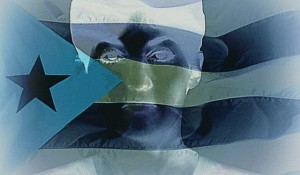 Wednesday morning, I suppose I had number stations on the brain. It was no surprise, as I had just watched The Numbers Station the previous night. Nonetheless, I experienced a rather strange coincidence: I was reading an intriguing article about Ana Montes, “one of the most damaging spies in U.S. history,” when my shortwave radio–parked on 5,855 kHz–suddenly began to fire out an eerie series of numbers and data bursts from the Cuban numbers station, HM01. It was, unquestionably, the perfect accompaniment to the words I was reading.
Wednesday morning, I suppose I had number stations on the brain. It was no surprise, as I had just watched The Numbers Station the previous night. Nonetheless, I experienced a rather strange coincidence: I was reading an intriguing article about Ana Montes, “one of the most damaging spies in U.S. history,” when my shortwave radio–parked on 5,855 kHz–suddenly began to fire out an eerie series of numbers and data bursts from the Cuban numbers station, HM01. It was, unquestionably, the perfect accompaniment to the words I was reading.
A reader sent Montes’ story–written by Jim Popkin for The Washington Post Magazine–which made for fascinating reading. And as I read the account of Ana Montes’ rise in the ranks of the DIA, while simultaneously becoming one of Cuba’s most important spies, I remembered that it was actually Montes’ case that reader Dirk Rijmenants’ referred to in his paper, and that we posted earlier this year.
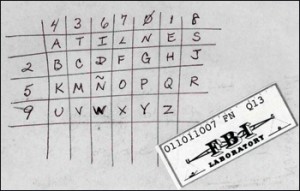
A “cheat sheet” provided by Cuban intelligence that
Ana Montes used to help her encrypt and decrypt
messages to and from her handlers. (Source: FBI)
Popkin’s account of Ana Montes’ life, character, promotions within the Defense and Intelligence Agency, and the sequence of events that led to her FBI investigation and imprisonment, are the stuff of spy novels. And of course, he mentions numbers stations:
[Montes’] tradecraft was classic. In Havana, agents with the Cuban intelligence service taught Montes how to slip packages to agents innocuously, how to communicate safely in code and how to disappear if needed.[…]
Montes got most of her orders the same way spies have since the Cold War: through numeric messages transmitted anonymously over shortwave radio. She would tune a Sony radio to AM frequency 7887 kHz, then wait for the “numbers station” broadcast to begin. A female voice would cut through the otherworldly static, declaring, “Atención! Atención!” then spew out 150 numbers into the night. “Tres-cero-uno-cero-siete, dos-cuatro-seis-dos-cuatro,” the voice would drone. Montes would key the digits into her computer, and a Cuban-installed decryption program would convert the numbers into Spanish-language text.[…]
On a side note, as Rijmenants points out, using a computer to decipher a numbers station was both unnecessary and risky.
The story continues:
[…]On May 25, 2001, [an FBI team] slipped inside Apartment 20. Montes was out of town with Corneretto [her boyfriend], and the FBI searched her closets and laundry bins, paged through shelves of neatly stacked books and photographed personal papers. They spotted a cardboard box in the bedroom and carefully opened it. Inside was a Sony shortwave radio. Good start, Lapp thought. Next, techs found a Toshiba laptop. They copied the hard drive, shut down the computer and were gone.[…]The documents, which Montes had tried to delete, included instructions on how to translate numbers-station broadcasts and other Spy 101 tips.[…][…]Later that day, an FBI evidence team scoured Montes’s apartment for hours. Hidden in the lining of a notebook they found the handwritten cipher Montes used to encrypt and decrypt messages, scribbled shortwave radio frequencies and the address of a museum in Puerto Vallarta, Mexico, where she was meant to run in an emergency. The crib sheets were written on water-soluble disappearing paper.[…]
The story Popkin recounts, though, paints the picture of a very complex operative. One who, until discovered, was very successful at her craft. She pulled the wool over the eyes of the DIA and spied for the Cuban government for many years.
The story is complex, and Popkins’ account somehow maneuvers through the twists and turns.
If you want to experience what I did–if a little less coincidentally–click here to read Popkin’s full article, and meanwhile play this recording I made of the Cuban numbers station HM01, below:
Note that the year Montes listened to the Cuban numbers station on 7,887 kHz, it only contained numbers–unlike the recording here of HM01 (Hybrid Mode 01) which contains both voice and RDFT data bursts (which you can also decode, but not necessarily decipher).
This recording of the Cuban numbers station HM01 was recorded on April 24, 2013, at 10:00 UTC on 5,855 kHz in AM. Click here to download the recording as an MP3.
Again, click here to read Jim Popkin’s full story of Ana Montes on The Washington Post Magazine website.

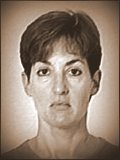
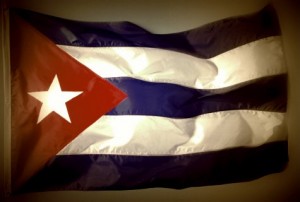
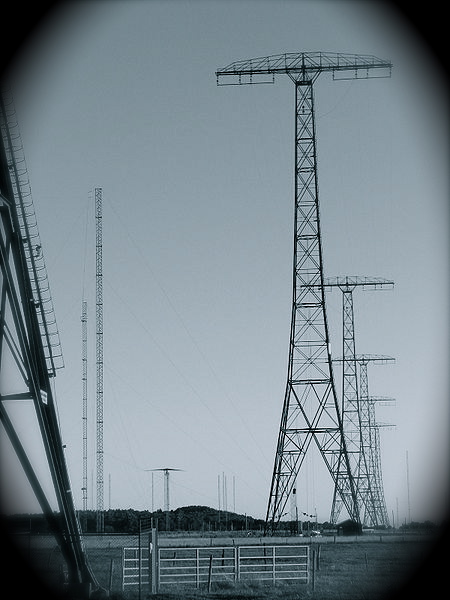 Slate:
Slate: